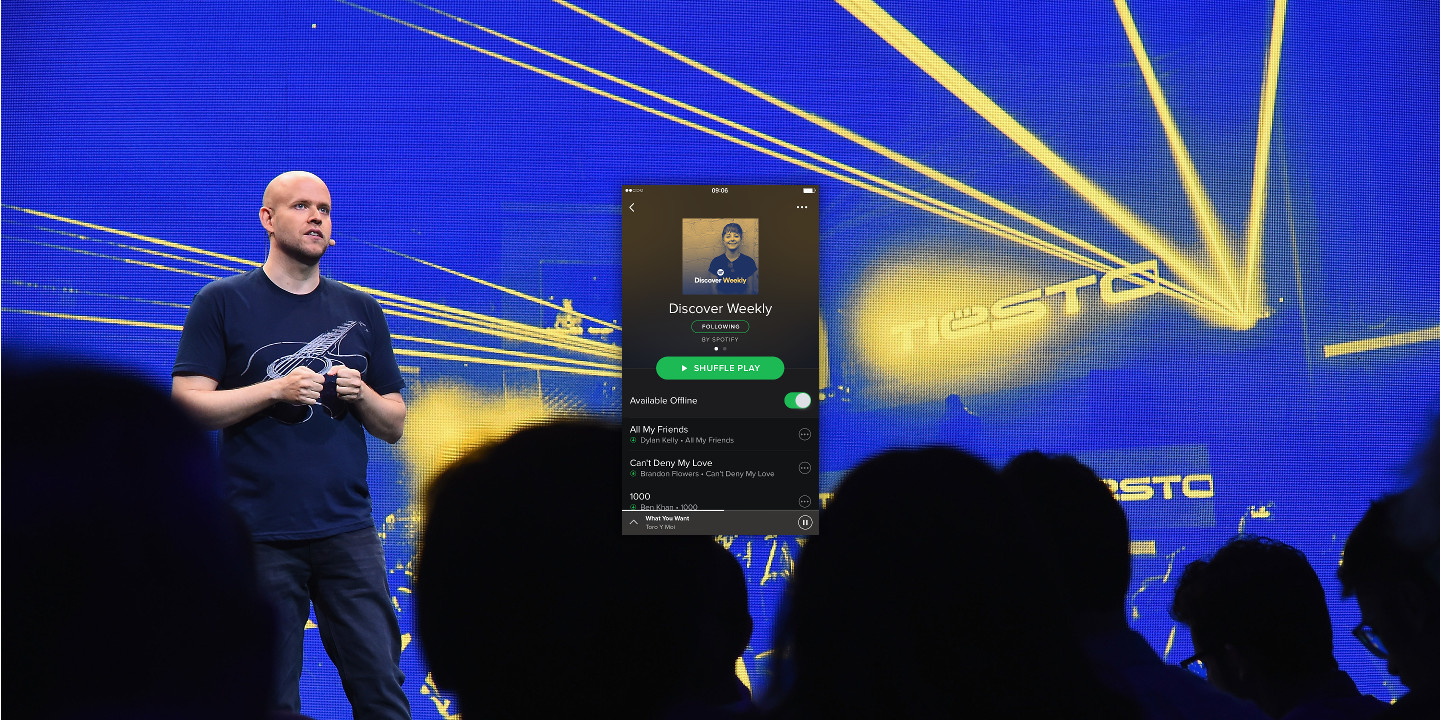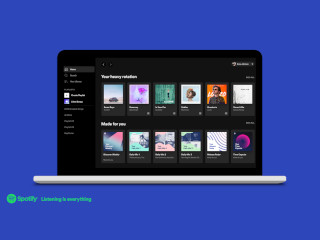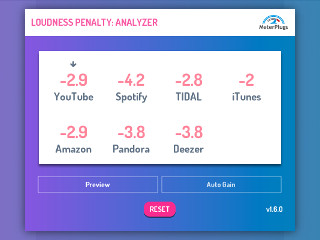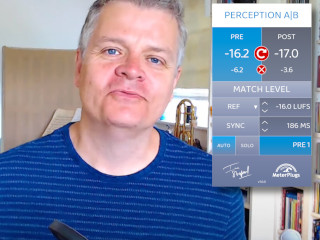Spotify has lowered its normalization level from -11 LUFS to -14 LUFS, matching Tidal and bringing it closer to iTunes (-16 LUFS). The new level provides increased headroom for dynamics, meaning that dynamic music will play back just as loud as more compressed music. In other words, quit hyper-compressing your music!
What is Loudness Normalization?
Loudness normalization aims to level the playback volume of songs, creating a more consistent and enjoyable listening experience. Typically, loud songs are lowered in volume (to the normalization level), while quieter songs are left alone. Loudness normalization is now used by all of the major online streaming services: Spotify, YouTube, iTunes and Tidal.
It’s a two-step process. First, songs are analyzed to determine their loudness level. Then, the gain of each song is adjusted so that loudness differences between songs are minimized.
Unfortunately, the streaming platforms use different algorithms for measuring loudness. Tidal has stated that they use the ITU-R BS.1770-4 standard. As for the other platforms, there’s no official guidance. ![]() But, through repeated testing, dedicated individuals have been able to determine the approximate normalization levels of each platform…
But, through repeated testing, dedicated individuals have been able to determine the approximate normalization levels of each platform… ![]()
Comparison of Streaming Services
Here are the current (as of this writing), approximate normalization levels for the major streaming services:
| Platform | Normalization Level |
|---|---|
| iTunes | -16 LUFS |
| Tidal | -14 LUFS |
| Spotify | -14 LUFS |
| YouTube | -12 LUFS |
How Does This Affect You?
By lowering their normalization level to -14 LUFS, Spotify has increased the amount of “dynamic headroom” above the normalization level, which means that your music can now be more dynamic and still play back just as loud as more compressed music. It is yet another reason to avoid making your music loud in an attempt to stand out amongst the competition. “Loud” songs will simply sound flat and dull in comparison to more dynamic, punchy and impactful ones.
How Loud Should Your Music Be?
While there’s no “one size fits all” answer to that question, here are some guidelines:
-
The loudest song on your album need not be any louder than -12 LUFS, unless there is a creative reason for doing so. Even on YouTube, it will not play back louder than other songs (it will be reduced in volume).
-
The loudness “sweet spot” is roughly between -12 LUFS and -18 LUFS. Songs that are quieter than -18 LUFS may be difficult to hear on low-gain mobile devices.
-
Not every song should play back as loud as others. For example, a solo flute might sound weird if played back as loud as a heavy metal band. This is where the art of properly balancing and arranging each song in an album comes into play.
-
In all cases, use a true-peak meter to keep your peaks below -1 dBTP, to prevent clipping.
Dynameter Update
We have updated the Spotify preset in our Dynameter plugin with the new normalization level. Dynameter helps you optimize the dynamics of your music for punch, power and impact, so that your music sounds great on every playback system. It includes presets for the major streaming platforms, making it easy to see how your music will play back on each one.






